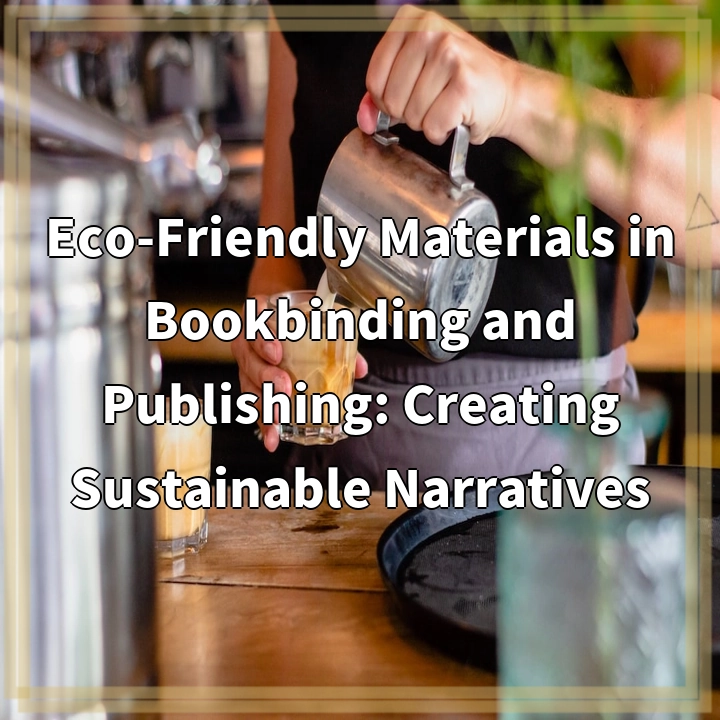
What is Eco-Friendly Materials in Bookbinding and Publishing?
Eco-friendly materials in bookbinding and publishing refer to the use of sustainable and environmentally responsible materials and practices in the production and manufacturing of books and related materials. This includes the selection of materials that have a reduced impact on the environment, as well as the adoption of eco-friendly production techniques.
Real-World Problems Associated with Eco-Friendly Materials in Bookbinding and Publishing
1. Limited Availability
Eco-friendly materials for bookbinding and publishing often have limited availability. This is due to a number of factors, such as the relatively niche market demand for such materials and the need for specialized suppliers and manufacturers. As a result, it may be challenging for publishers and bookbinders to find sustainable alternatives to more conventional materials.
2. Higher Costs
Another real-world problem associated with eco-friendly materials in bookbinding and publishing is their higher costs. Sustainable materials, such as recycled paper or organic fabrics, tend to be more expensive than their conventional counterparts. This can pose a financial challenge for publishers and bookbinders, especially for those operating on smaller budgets.
3. Quality and Durability
Eco-friendly materials may sometimes be perceived as having lower quality and durability compared to traditional materials. For example, recycled paper may be seen as more susceptible to wear and tear or fading over time. Overcoming this perception and ensuring that eco-friendly materials are of high quality and long-lasting is essential to gain wider acceptance and adoption within the industry.
4. Resistance to Change
Resistance to change is a common challenge when shifting to eco-friendly practices in any industry. In the bookbinding and publishing sector, there may be resistance from stakeholders who are comfortable with traditional materials and methods. Educating and creating awareness about the importance of using eco-friendly materials can help overcome this resistance and promote a more sustainable approach to book production.
5. Regulating Standards
There is a lack of standardized regulations and certifications for eco-friendly materials in bookbinding and publishing. This can make it difficult for publishers, bookbinders, and consumers to identify and choose truly sustainable materials. Greater collaboration among industry organizations and the development of clear guidelines and certifications would help promote transparency and facilitate the widespread use of eco-friendly materials.
By addressing these real-world problems, the bookbinding and publishing industry can strive towards creating more sustainable narratives through the use of eco-friendly materials. Overcoming challenges related to availability, cost, quality, resistance to change, and regulating standards will contribute to a more environmentally responsible industry that aligns with the growing global concern for sustainability.

Solutions for Eco-Friendly Materials in Bookbinding and Publishing
1. Expanding Availability
Efforts should be made to expand the availability of eco-friendly materials in bookbinding and publishing. This can be done by supporting and promoting sustainable suppliers and manufacturers, encouraging the development of new eco-friendly materials, and creating networks and platforms to connect producers and consumers of sustainable materials.
2. Cost Reduction Strategies
To address the higher costs associated with eco-friendly materials, cost reduction strategies can be implemented. This includes exploring economies of scale, negotiating bulk purchasing agreements, and seeking grants or funding opportunities specifically aimed at promoting the use of sustainable materials in the publishing industry.
3. Improvement in Quality and Durability
Investing in research and development can help improve the quality and durability of eco-friendly materials. Finding innovative ways to enhance the performance of recycled paper, developing new organic fabric treatments, or exploring alternative sustainable materials can help overcome the perception that eco-friendly materials are of lesser quality.
4. Education and Awareness
To combat resistance to change, education and awareness campaigns are essential. Providing information about the environmental benefits of using sustainable materials, sharing success stories of publishers and bookbinders who have successfully adopted eco-friendly practices, and highlighting the long-term economic advantages of sustainability can help shift attitudes and promote acceptance of eco-friendly materials.
5. Establishing Clear Standards
Collaboration within the industry is necessary to establish clear standards and certifications for eco-friendly materials in bookbinding and publishing. This can involve working with industry organizations, government agencies, and environmental experts to develop guidelines and labels that ensure transparency and allow for informed decision-making by publishers, bookbinders, and consumers.
By implementing these solutions, the bookbinding and publishing industry can overcome the real-world problems associated with eco-friendly materials and create a more sustainable future. With expanded availability, cost reduction strategies, improved quality, increased education and awareness, and clear standards, eco-friendly materials can become the norm, leading to a more environmentally responsible and resilient publishing industry.















